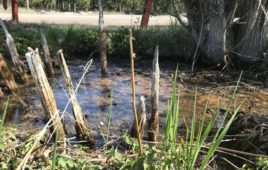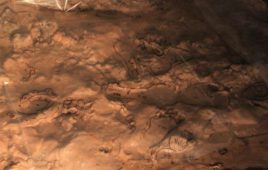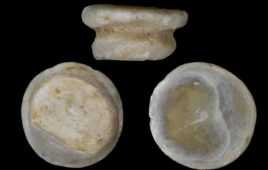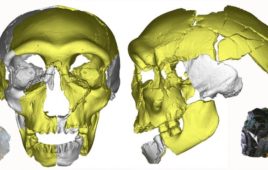 More than one hundred and fifty years ago, Charles Darwin hypothesized that species could cross oceans and other vast distances on vegetation rafts, icebergs, or in the case of plant seeds, in the plumage of birds.
More than one hundred and fifty years ago, Charles Darwin hypothesized that species could cross oceans and other vast distances on vegetation rafts, icebergs, or in the case of plant seeds, in the plumage of birds.
Though many were skeptical of Darwin’s “jump dispersal” idea, a new study suggests that Darwin might have been correct.
A new computational method, published in the journal Systematic Biology, tested two competing theories about how species came to live where they do and found strong evidence for jump dispersal, especially for island species.
The question of how species came to live where they live, which is studied by the field of biogeography, has long been debated among biologists, especially in cases where organisms that are related live on distant continents separated by vast oceans. Examples are flightless birds like the African ostrich and the Australian emu and Southern Beeches, a genus of 36 species of trees and shrubs which appear in temperate forests from South America to Australia and New Zealand.
Others found Darwin’s “jump dispersal” theory too fanciful and suggested instead that “land bridges” were used when continents were contiguous. This view, called “vicariance biogeography,” became the dominant paradigm.
In fact, the vicariance view became so dominant that computer programs designed to estimate the biogeographic history of a species left out jump dispersal entirely, and these programs have been used in hundreds of studies in recent years.
Yet, in many cases, statistical dating of evolutionary events indicated that the breakup of land masses occurred tens of millions of years before some species’ ancestors evolved, bringing into question the validity of vicariance methods.
The new study compares the theories of jump dispersal and vicariance in a new computational program developed by Nicholas J. Matzke, a postdoctoral fellow at the National Institute for Mathematical and Biological Synthesis. Using data from many species that live on the Hawaiian Islands and on other archipelagos, Matzke found that jump dispersal was able to explain the biogeography of the species with a far greater statistical probability than through the vicariance method.
“Conventional biogeography said vicariance was a more scientific explanation than jump dispersal because vicariance relied on normal, predictable processes, and jump dispersal relied on extremely rare, near-miraculous events,” Matzke said. “Now the shoe is really on the other foot because the jump dispersal pattern appears to be much more common. It looks like Darwin was right after all.”
Matzke suggests that researchers need to include jump dispersal in order to accurately reconstruct evolutionary history.
“Jump dispersal helps us remember that events that are rare on human timescales can be common over geological timescales, and that biodiversity might be structured largely by these rare chance events.”
The National Institute for Mathematical and Biological Synthesis is an NSF-supported center that brings together researchers from around the world to collaborate across disciplinary boundaries to investigate solutions to basic and applied problems in the life sciences.
Source: National Institute for Mathematical and Biological Systems




